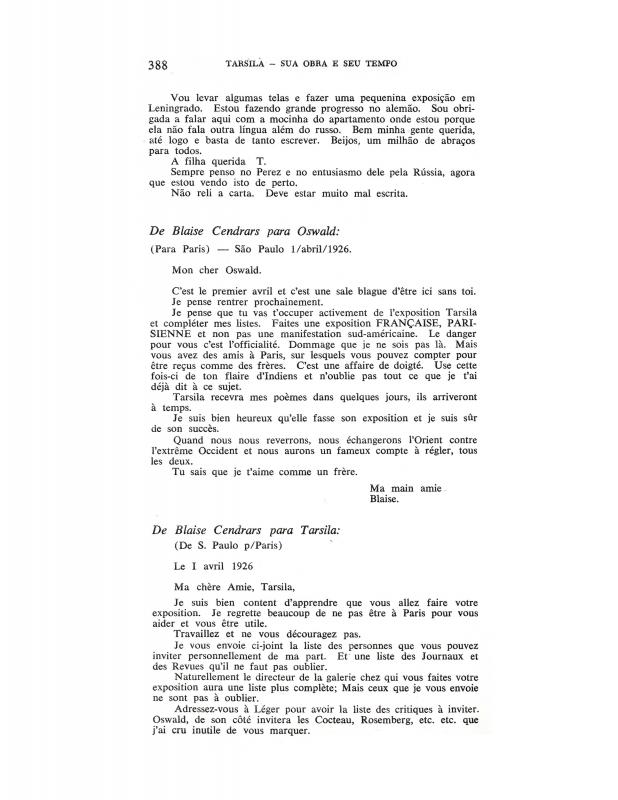Prior to this book, Blaise Cendrars (1887–1961) had published others that were also illustrated by modernist artists, such as the paradigmatic foldout work produced in 1913, La prose du Transsibérien et de la petite Jehanne de France, which included abstract illustrations by Sonia Delaunay-Terk; and the collaboration with Fernand Léger La fin du monde filmée par l’Ange Notre Dame, published in 1919. According to the Dutch historian Sérgio Buarque, the layout of the latter book subsequently inspired the cover of the Brazilian modernist magazine Klaxon (number seven) published in April 1922, just weeks after the opening of the Semana de Arte Moderno in February of that year. [See the ICAA digital archive: “Klaxon—editorial” (doc. no. 780955)].
The Pau-Brasil movement represented an essential aspect of early Brazilian modernism (1922–26), whose exponents Oswald de Andrade, Mário de Andrade, and the painter Tarsila do Amaral?accompanied by Blaise Cendrars?traveled together through the interior of the country in 1924. The tour, which provided the background for the Swiss poet’s book, was known as the “caravana da descoberta do Brasil” [Discovery of Brazil Caravan]. The trip (and La Semana de ‘22) was sponsored by the millionairess Doña Olívia Guedes Penteado. During Holy Week, the group visited the baroque cities of Minas Gerais (São João del Rei, Tiradentes, Ouro Preto, and Congonhas do Campo) and the state capital. While staying at the Grande Hotel in Belo Horizonte, they spent time with the poet Carlos Drummond de Andrade, who at that time was still among the avant-garde. The journey, which the group described as a “caravan devoted to the discovery of Brazil,” no doubt spawned the Movimiento Pau-Brasil, whose search for an original source embraced indigenous cultures as well as the rural landscape (in Minas Gerais or in São Paulo) that they sought to convey through a “caipira” [rural, country, rancher] style of artistic expression.
[As complementary reading, see the articles: “Manifesto Pau-Brasil” (doc. no. 781051) and [“’Pau-Brasil’, marca de fábrica…”], both by Oswald de Andrade; “Pintura Pau-Brasil e antropofagia,” by Tarsila do Amaral (doc. no. 784978); and Blaise Cendrars’s letter to Oswald de Andrade written in April 1926 (doc. no. 780570)].




